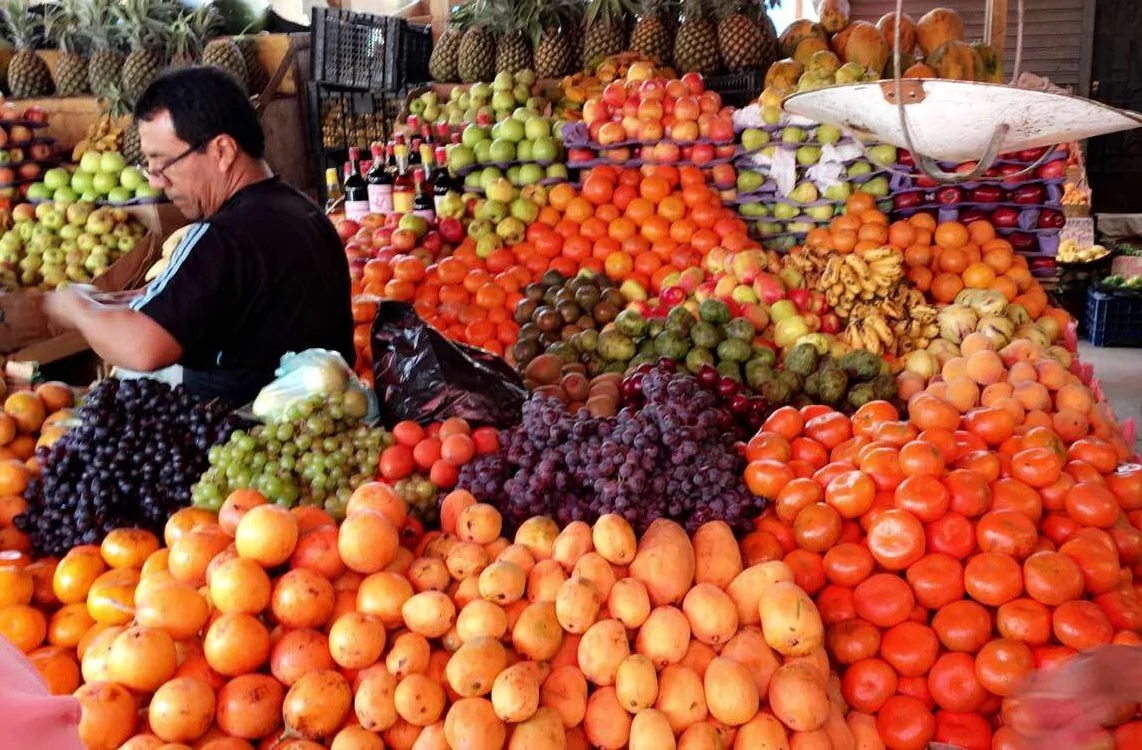Did you know that Peru is the country with the most national dishes? And that they have 3000 different potatoes and thousand of fruits and vegetables that don’t exist anywhere else in the world. Perhaps the Amazon plays an important part in the country’s great variety, biodiversity and growth. Due to the density of its vegetation and close proximity of the trees, the amazon over thousands of years has been able to form a strong and large interconnected network. If you didn't know— now you know— trees “talk”. And by talk I mean they communicate underground through a dense channels of roots and veins that extends out in all directions. They also help each other out; exchange nutrients, water and vitamins similar to knocking on your neighbors door for some extra sugar. Its truly magical!
These are some pretty “Amazonic” fruits that I have discovered.
LUCUMA tastes as if a sweet potatoes and maple syrup had a child. This subtropical fruit is native to Peru and is known as well as "the last gold of the Incas". Images of it have been found on the ceramics of ancient Peruvian cultures. Thats pretty “Amazonic” if you ask me.
Note: Contains beta carotene, iron, zinc, vitamin B3, calcium, and protein. Lucuma oil helps support wounds by activating healing factors within the skin.
CHIRIMOYA in English that translates to Custard Apples. Now imagine that these heart shaped apples taste like a banana,pineapple, peach and strawberry milk shake. The only down side to this fruit is that it has about 40 seeds inside that make devouring this “Amazonic" treat a very slow process!
CAMU CAMU is native to the Peruvian Amazon Rainforest this fruit has a taste similar to a sour cheery and lime. It is ideal for juices, jams, ice creams or yogurts and super high in Vitamin C content, 50 times that of an orange!
Note: In Peru natural medicines containing Camu Camu are used as antioxidants and anti-depressant as well as for stress relieve and the treatment of flu symptoms.
AGUAJE grow in Moriche palm trees native to the tropical Amazon regions of Peru. These fruits have an outside texture very similar to that of a pineapple except they are reddish-purple-brown in color. Inside a thin layer of a firm, yellowish-orange pulp covers a large seed and can be eaten raw.
Note: The pulp of aguajes is extremely rich in essential fatty acids and has a high Vitamin a and C content. The oil extracted from the Moriche Palm fruit is called Buriti and is used to treat burns.
TUMBO looks like a banana hijacked a passion fruit. and, like the passion fruit tends to be quiet acidic and tart, therefore seldomly it is eaten raw.
Note: It is low in calories, and yet is rich in minerals like calcium, phosphorus, and iron and vitamins A, B, and C. The tumbo is also known for having therapeutic properties; it works against kidney stones, urinary tract problems, and stomach aches. It is abundant with vitamin C, an anti-oxidant which safeguards you from the harm free-radicals cause, avoiding premature aging as well as keeping the immune system powerful.
THE TUNA also known as cactus fruit or prickly pear thankfully tastes nothing like Tuna! instead, the bright red purple insides that it contains many small seeds tastes more like a juicy, extra sweet watermelon!
Note: The tuna is believed to lower the cholesterol and blood sugar level as well as having antioxidant properties.
PEPINO DULCE taste like a sweet cucumber and it is native to the temperate Andean regions of Peru. Pepinos have a flavor of a combination of honey melons and cucumber and are very tasty.
Note: They can be eaten raw and often used in fruit salads, breakfast cereals or as dessert.
AGUAYMANTO also known as Tomatito Silvestre, Tomatillo, Capulí or in the US as Peruvian cherry or cape gooseberry. The fruit is native to high altitude areas in Peru where it still grows wild and has been cultivated at least since Inca times. This cherry like fruit although it easily disguises under its none edible paper like skin has a sweet and sour taste.
Note: This fruit contains high levels of Vitamin A, B and C and is believed to have anti-inflammatory and antioxidant properties.





